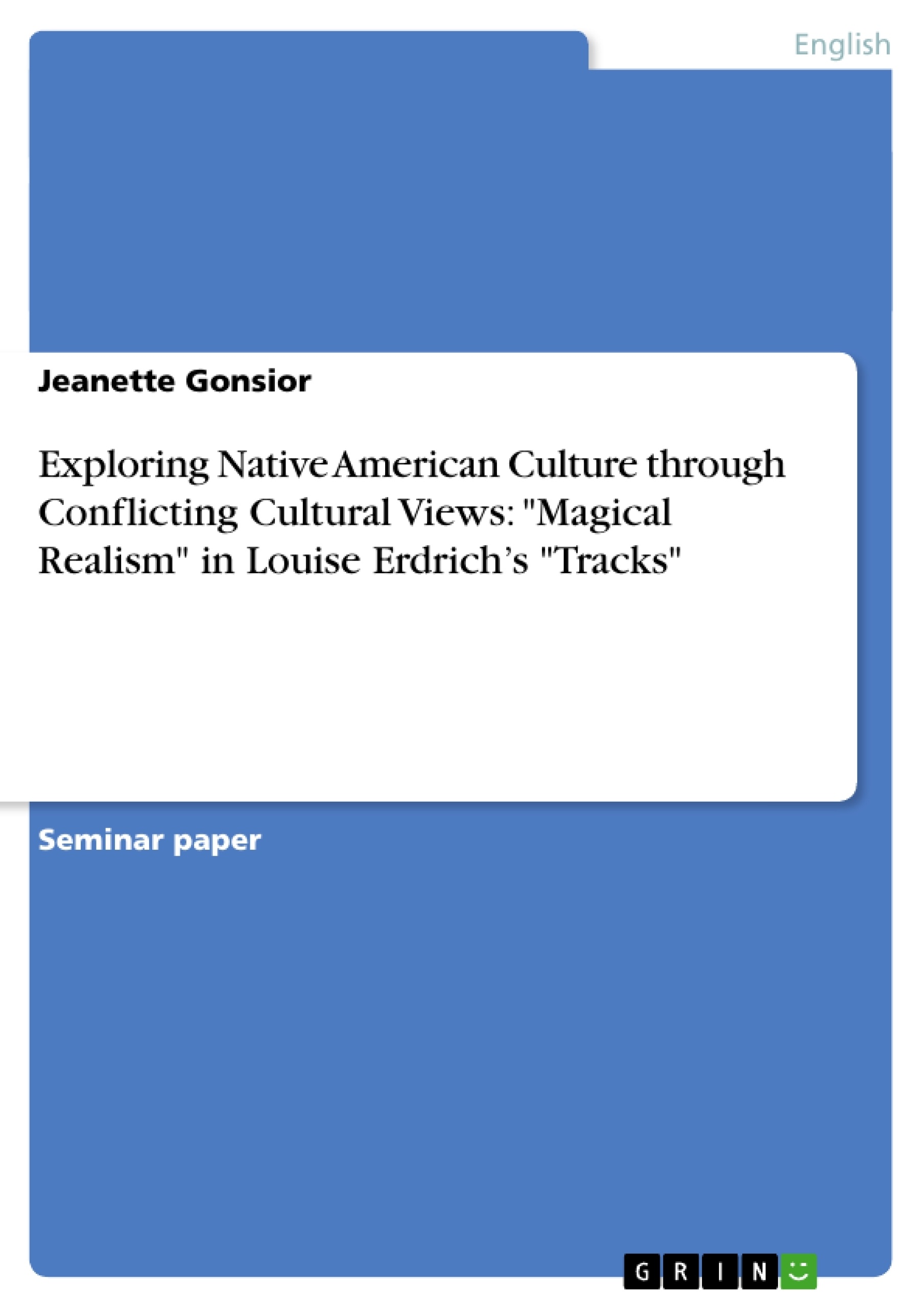INTRODUCTION
Karen Louise Erdrich, born in Minnesota in 1954 as the eldest of seven children, was raised Catholic in Wahpeton, North Dakota, where her parents taught at the Wahpeton Indian Boarding School. Her fiction reflects facets of her mixed heritage: she is German-American by her father, as well as French and Ojibwa (also known as Chippewa or Anishinaabe) by her mother. Louise Erdrich left North Dakota in 1972 and entered Dartmouth College in New Hampshire, where she met Michael Dorris, a mixed-blood Modoc Indian writer who founded the Native American Studies department at the college. Collaboratively, they published "Route Two" (1990) and "The Crown of Columbus" (1991). Erdrich and Dorris married in 1981, but were in the midst of divorce proceedings when he committed suicide in 1997. ”I knew that Michael was suicidal from the second year of our marriage,” Erdrich said in an interview. The award-winning writer is considered to be one of the most significant Native American novelists from the “second wave” of what is called the Native American Renaissance (see chapter 1.2). She is an enrolled member of the Turtle Mountain Band of Ojibwe.
“No one knew yet how many were lost, people kept no track.” (Tracks, p. 15)
"Tracks" (1988)
Erdrich’s novel Tracks, which is to be explored in the present argument, is the third part of an initially planned tetralogy, including "Love Medicine" (1984), "The Beet Queen" (1986), and "The Bingo Palace" (1994). Louise Erdrich created a novel cycle, exploring the lives of various generations of Chippewa family who live on a fictional reservation in North Dakota in the twentieth century, a time when Indian tribes were struggling to retain their remaining land. Chronologically speaking, it is the family’s earliest period—from 1912 to 1924—that is related in Tracks.
In most of her works, Erdrich uses several characters to narrate alternating chapters, presenting a story that unfolds from multiple perspectives. "Tracks" is told retrospectively by two homodiegetic narrators: Pauline Puyat, a mixed-blood who denies her Indian “half” in order to be accepted into the convent and changes her name to Sister Leopolda, and Nanapush, an older Native American who tells his story to a named addressee, his granddaughter Lulu: “You were born on the day we shot the last bear, drunk, on the reservation.” ("Tracks", p. 58) "Tracks" is constructed as mutually referential focalization, ...
Inhaltsverzeichnis (Table of Contents)
- INTRODUCTION
- NATIVE AMERICAN LITERATURE
- Telling histories: The oral tradition
- The importance of the Native American Renaissance
- LITERARY MAGICAL REALISM
- Origin and history of the term
- Towards a definition: Characteristics of magic realist literature
- MAGICAL ELEMENTS IN LOUISE ERDRICH'S TRACKS
- Two narrators = two versions of reality? It all depends on the perception of "truth" and "reality".
- Enlisting the reader: Conflicting cultural views and untrustworthy narrators
- CONCLUSION: Interpreting the magical in Tracks
Zielsetzung und Themenschwerpunkte (Objectives and Key Themes)
This paper explores the use of magical realism in Louise Erdrich's Tracks, analyzing how conflicting cultural views are presented through the novel's narrative structure and magical elements. It examines the novel within the context of Native American literature and the broader tradition of magical realism.
- The portrayal of conflicting cultural perspectives between Native American and Western worldviews.
- The role of magical realism in representing historical trauma and cultural survival.
- The use of multiple narrators and shifting perspectives to create a complex and multifaceted narrative.
- The impact of historical events, such as the Dawes Act, on Native American communities.
- The representation of the struggle to preserve traditional Native American culture in the face of assimilation.
Zusammenfassung der Kapitel (Chapter Summaries)
The Introduction provides biographical context for Louise Erdrich and situates Tracks within her larger body of work. It establishes the novel as part of a larger cycle exploring the lives of Chippewa families.
Chapter 1 explores the history and characteristics of Native American literature, emphasizing the oral tradition and the significance of the Native American Renaissance.
Chapter 2 delves into the origins and defining characteristics of literary magical realism, providing a theoretical framework for the analysis of Tracks.
Chapter 3 analyzes the magical elements within Tracks, focusing on the dual narrations of Pauline and Nanapush and how their conflicting perspectives shape the reader's understanding of the events. The chapter explores how the novel uses unreliable narrators to highlight the complexities of truth and reality within the context of cultural conflict.
Schlüsselwörter (Keywords)
Louise Erdrich, Tracks, Native American Literature, Magical Realism, Cultural Conflict, Assimilation, Oral Tradition, Narrative Perspective, Historical Trauma, Chippewa, Dawes Act.
- Quote paper
- Jeanette Gonsior (Author), 2009, Exploring Native American Culture through Conflicting Cultural Views: "Magical Realism" in Louise Erdrich’s "Tracks", Munich, GRIN Verlag, https://www.grin.com/document/125661



